How to use a mocha pot to make coffee? What kind of coffee grind does the mocha pot use?
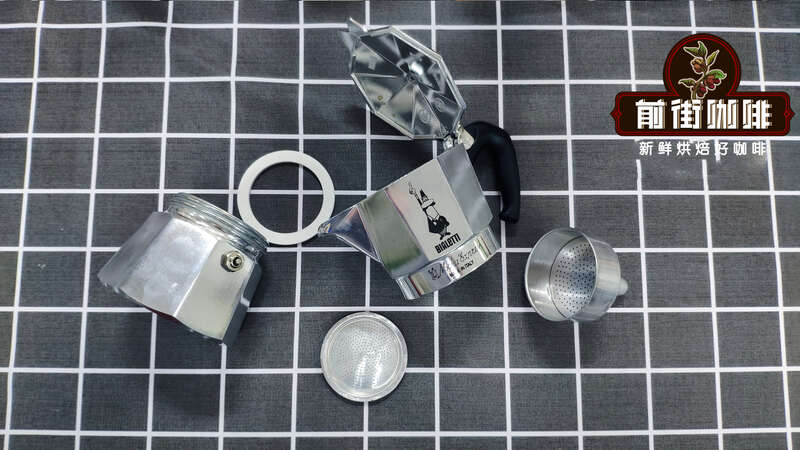
The mocha pot is a symbol of Italian coffee culture and is one of the most famous brewing equipment in the world. Its iconic design, ease of use and wide availability make it an accessible entry point for special coffee.
Although it is often used to make strong and full-bodied coffee at home, the moka pot actually has a wide range of uses. With a little experiment, home brewers can use it to explore specialty coffee and even remake popular coffee shop drinks.
Before we study how to improve the brewing of coffee with a mocha pot, let's take a look at its ingredients.
Most mocha pots are made of aluminum or stainless steel and consist of three parts: the lower chamber, the filter basket (where the coffee is ground) and the upper collection chamber.
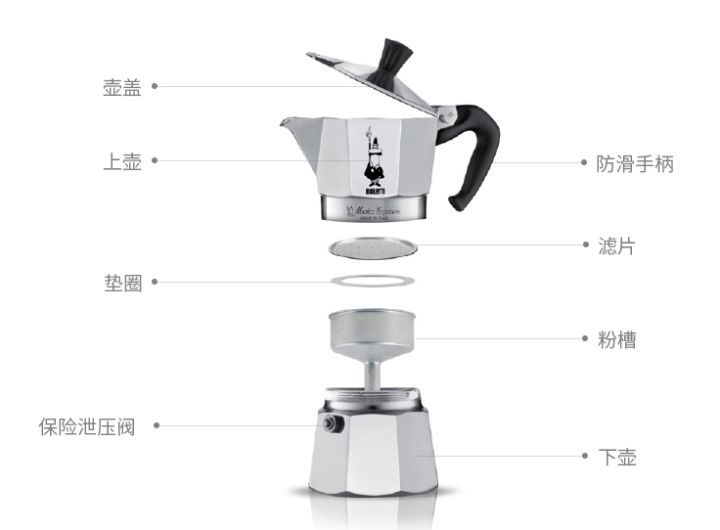
Ideally, they should be used on gas or induction cookers. If you have an electric stove, you may need to look for other models to ensure the best brewing temperature.
To use a mocha pot to make coffee, first add hot water to the bottom chamber. There is usually a safety valve near the rising 3/4-pour water until it just touches the bottom of the valve.
Fill the coffee grounds into the filter basket until horizontal, but do not crush them. After that, place it in the bottom chamber (which should be exactly in the slot), and screw the upper chamber into place. Put the fully assembled pot on the stove.
When the water begins to boil in the lower chamber, the resulting steam creates pressure and forces the water up through the filter. The cackling sound heard during brewing is caused by the entry of water vapor into the upper chamber.
In theory, the mocha pot functions like an espresso machine. Both use pressure to push hot water through ground coffee. The difference, however, is that the mocha pot pushes up and does not use high-pressure water to shorten the brewing time of the espresso machine. This means that although the mocha pot does not produce espresso, it still produces strong, strong and strong cups.
To learn more about how one can improve the way mocha pots are brewed, I talked to Nadia Bachur. Nadia (Nadia) is a barista at Athanasiou, a Greek cafe in Panama.
Nadia says people's most common mistake is water, not coffee. "most mocha pots have a safety valve at the bottom," she said. " "if you inject water above that level, there will be too much pressure."
The other most common mistake, she adds, is for brewers to use cold water, tamp their ground in filter baskets and brew at high temperatures.
Nadia recommends waiting until the fine grinding size starts; it's better than pouring water, but not as good as espresso. Using a grinding size sufficient for espresso can lead to over-extraction and bitter cups.
Tamping coffee grounds with a mocha pot is important for espresso, but it can cause channeling, she added. Channeling occurs when water passes through a gap or "channel" in a ground coffee bed rather than uniformly saturating the puck. This leads to insufficient extraction.
Finally, Nadia says filling the lower chamber with hot water (preferably freshly boiled) will speed up the extraction, prevent the coffee from burning and prevent it from producing a metallic flavor.
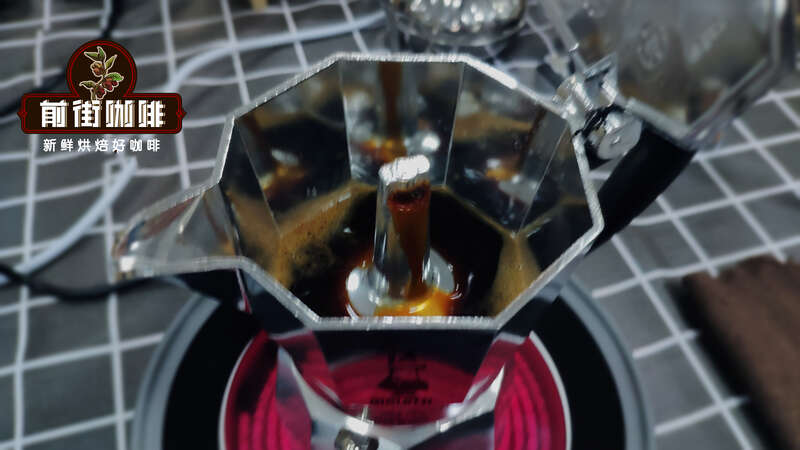
After all this is done, put the mocha pot on the low-and medium-heat stove. When brewing, please keep the lid open so that you can pay attention to it at all times.
Once you start to make a bubbling sound, remove it from the fire and close the lid, then rest for about a minute to make it fully brew.
Coffee made from a mocha pot is usually full-bodied and has a strong and strong taste. By default, most moka pots will also use coffee to water at a ratio of about 1:7. As a result, this produces two to three times the brewing concentration of regular filtered coffee.
So if you don't have an espresso machine, coffee brewed in a mocha can be used to remake espresso drinks at home. Andr é s Zuluaga, chief barista of Dos Cucharas in Panama. He suggests blistering warm milk in the French media by quickly raising and lowering the plunger for about 15 seconds.
You can then mix it with coffee brewed in a mocha pot to make a homemade cappuccino or latte. Adding chocolate and milk to drink will produce a taste similar to mocacino, or you can dilute it into homemade American coffee with hot water.
Valentina Palange and Luca Rinaldi are two content creators who run Speciality Pal in Milan, Italy. They told me that their task was to develop a distinctive Italian coffee culture and that they were trying to get local coffee drinkers to try mocha pots.
Valentina says that although mocha pots are traditionally associated with darker roasting (similar to espresso), it can actually be used to brew a variety of coffees with surprising success.
"you can brew high-quality coffee (regardless of source) in a Moka pot, and all coffees have similar roasting properties to filter coffee," she said.
Valentina also told me that she would adjust her diet slightly according to the source of the coffee. Although Nadia advises against using cold water in mocha pots, Valentina says she uses cold water when brewing coffee from Brazil, for example, to bring out some chocolate flavor.
Instead, she uses hot water to add water to coffee from East Africa, such as Ethiopia and Kenya, to speed up the extraction. She says it helps to highlight their floral and fruity aromas.
Finally, Valentina recommends taking a thermometer with you to monitor and record the water temperature, as this may have a significant impact on the flavor of the final cup.
Luca took a slightly different approach. First, he told me that he often used recipes designed by Lorenzo Baffi, the current professional Mocha Challenge champion. This diet uses 11 grams of coffee per 100 milliliters of water-a slightly higher proportion than usual.
He brewed coffee normally at low to medium calories, but once the coffee began to be collected in the upper chamber, he stirred it to make sure it was evenly mixed to get a balanced flavor. Luca also told me that he used an AeroPress filter with a smaller Moka pot to retain more oil in the coffee. This will lead to brighter acidity, less bitterness, and a cleaner cup as a whole.
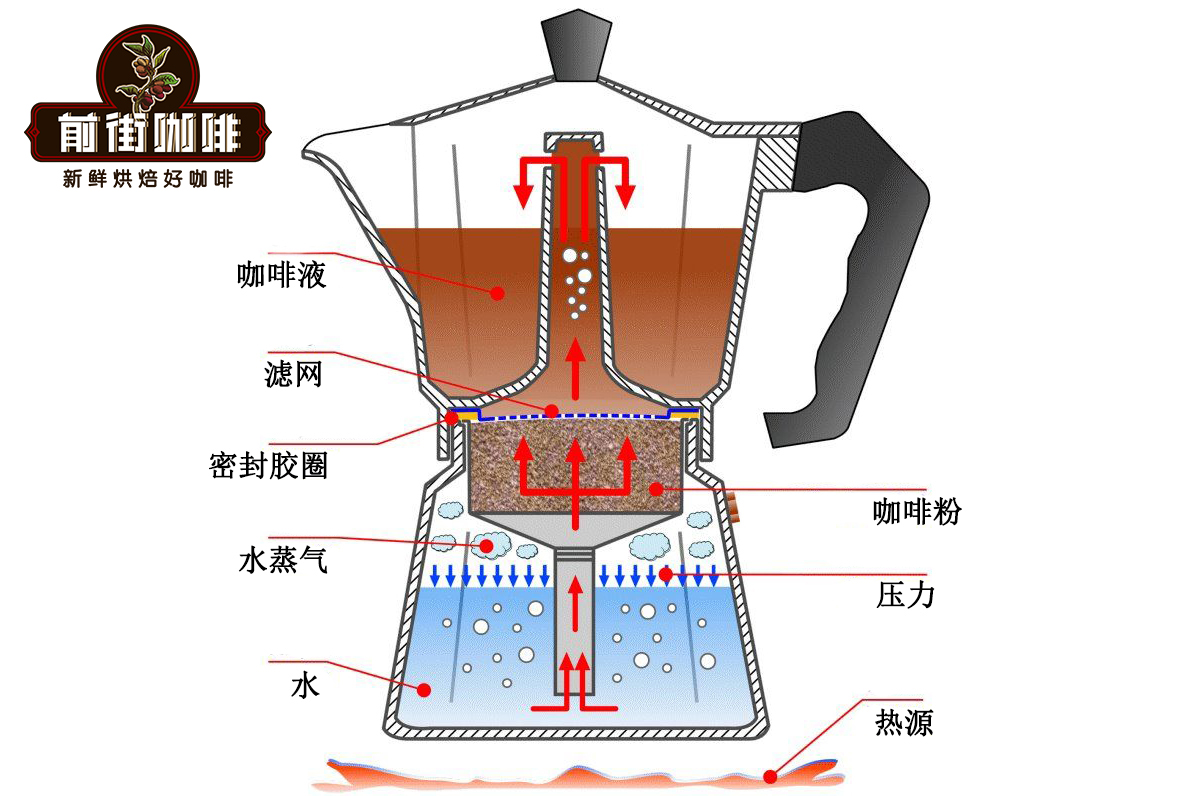
To avoid burning the coffee, Luca added, you can bypass or dilute the coffee by adding water or ice while it is still in the upper chamber. You can also stop the extraction more quickly by putting the bottom of the pot into a bowl of ice.
But, like Nadia, he recommends taking away the heat while it is still bubbling. Leaving it on the stove until the extraction is finished is a reliable way to cook coffee and destroy cups.
Today, there are dozens of different ways to make coffee at home. It has been 100 years since the invention of the mocha pot, but for some reason, it is still very popular among consumers. The markings and ease of use of the mocha kettle make it an excellent choice for home brewers who want to simply copy beer.
Despite this repeatability, there are still many ways to try using mocha pots. If you've been drinking filtered coffee for a while and want to switch to other coffee with a wide range of uses, maybe it's time to give it a try.
Important Notice :
前街咖啡 FrontStreet Coffee has moved to new addredd:
FrontStreet Coffee Address: 315,Donghua East Road,GuangZhou
Tel:020 38364473
- Prev

What is Ole Coffee? What's the difference between Ole coffee and latte?
There are more than a dozen kinds of milk coffee on the menu of most coffee shops. For most people, milk coffee is more difficult to make at home. Lait au is an exception. Although many cafes use espresso, they can also be made with any high concentration of coffee at home. It is easy to make and has different names all over the world.
- Next
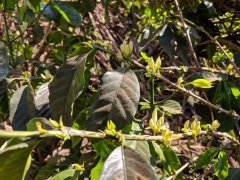
How to brew Beloya coffee with the flavor of Yega Chefeld Coffee and Sidamo Coffee?
Professional coffee knowledge exchange more coffee bean information Please follow Coffee Workshop (Wechat official account cafe_style) when it comes to coffee producing areas in Ethiopia, the famous Yegashifi and Sidamo always have a place in the hearts of coffee lovers. Qianjie Coffee tested the coffee beans in two producing areas by cup, and found that the coffee beans in Yega Xuefei producing area have a faint floral fragrance and bring flavor.
Related
- Beginners will see the "Coffee pull flower" guide!
- What is the difference between ice blog purified milk and ordinary milk coffee?
- Why is the Philippines the largest producer of crops in Liberia?
- For coffee extraction, should the fine powder be retained?
- How does extracted espresso fill pressed powder? How much strength does it take to press the powder?
- How to make jasmine cold extract coffee? Is the jasmine + latte good?
- Will this little toy really make the coffee taste better? How does Lily Drip affect coffee extraction?
- Will the action of slapping the filter cup also affect coffee extraction?
- What's the difference between powder-to-water ratio and powder-to-liquid ratio?
- What is the Ethiopian local species? What does it have to do with Heirloom native species?

